12 June 2012
Blown away by Bancroft: Part II
Posted by Jessica Ball
On the second day of the Bancroft Trip, we started out (once again) in the greenschist facies of the metamorphic pressure-temperature diagram:
Our first stop was at a great outcrop of massive amygdyloidal metabasalt. This stuff was chock full of amygdules (former vesicles filled by minerals), and all of them were full of lovely green epidote and chlorite (which are diagnostic of the fairly low-grade metamorphic facies).
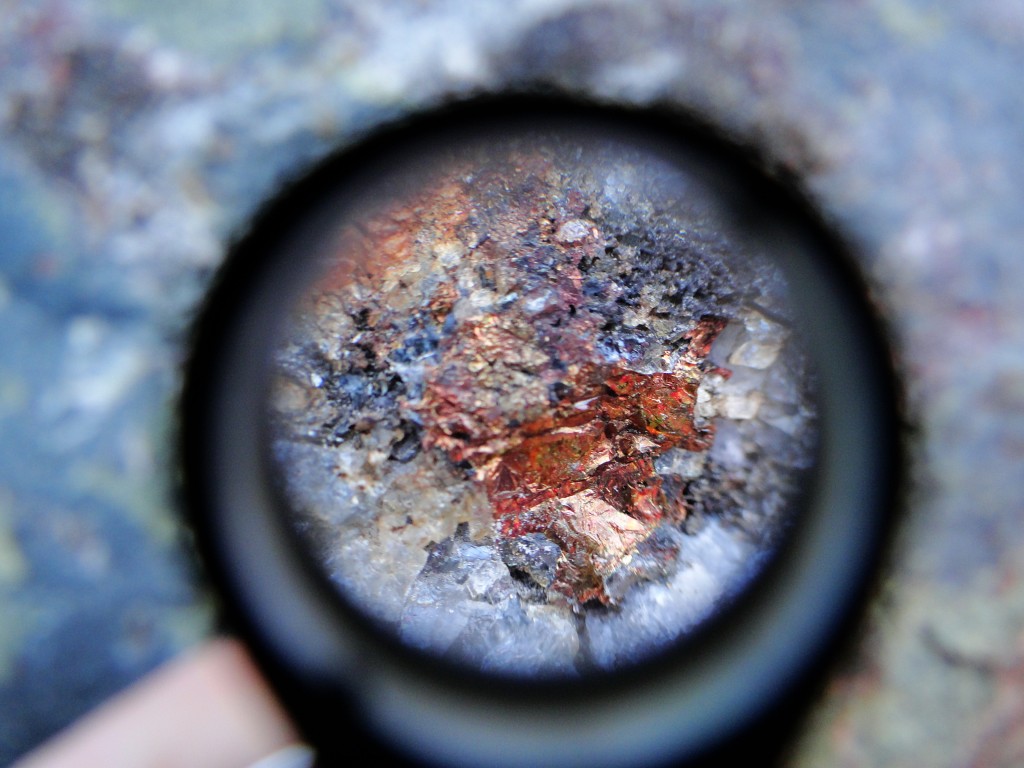
We didn't just see epidote and chlorite - there were also some pretty crystals of what appeared to be pyrite encrusting the fractured surfaces of the outcrop.
Our next stop was back on ON-7, about 16 km east of Marmora. Here we could see something very different: inclined surfaces on very shiny rocks with a pronounced slaty cleavage. But that wasn’t the only neat thing about this outcrop; there was also something interesting on top of those rocks.
Here, you can actually see a contact surface where bits of the underlying phyllite have been incorporated into the overlying conglomerate with the quartz clasts. There may be some time missing here, but probably not as much as the previous day’s outcrop. We’re still in the greenschist facies here.
But we didn’t stay there for long! The next stop (about 5 km east of ON-62 on ON-7) was actually suggested by a Canadian university group that we met at the phyllite stop. They called it the “pink marble” roadcut, and as you can see, it certainly was quite pink.
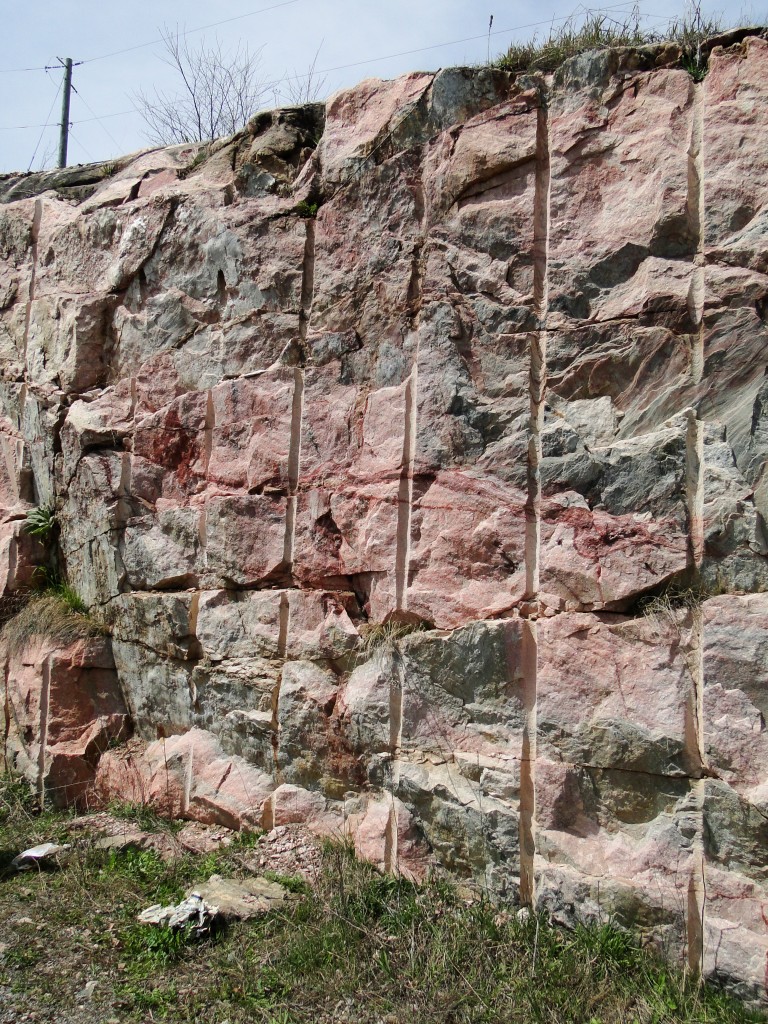
Lots of drill holes here, but it was still a striking rock face. The whole thing is about 5 meters high.
Up close, it looks like marble. Most of the outcrop is composed of calcite, in bands of grey and pink; there are even some little folds in there.
Farther to the east, there’s a big section that must have been hydrothermally altered at some point; it’s really cruddy, rusty rock. There was lots of staining here, and pyrite encrusting everything.
But if you look carefully at the more pristine parts of the roadcut, there are some tell-tale minerals that let us know this is more than just marble – it’s probably a skarn. Why? Because it has garnets!
Garnets are a common mineral in skarn, and these are probably either grossular garnet (Ca3Al2(SiO4)3) or andradite (Ca3Fe2(SiO4)3) – exactly what you’d expect to find in a calcium- and silica-rich setting. And because there are garnets here, we’ve moved out of the greenschist faces and into the amphibolite faces.
Next up: more outcrops in the amphibolite facies!


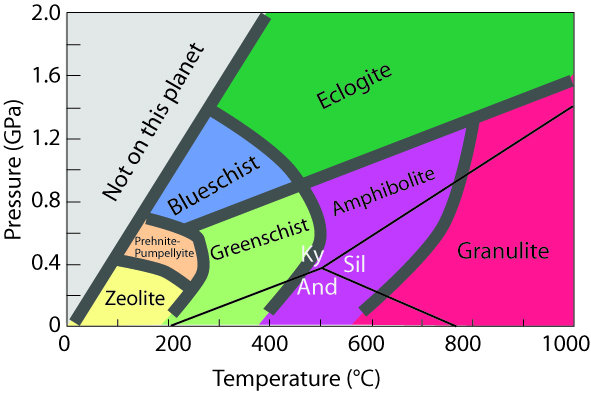
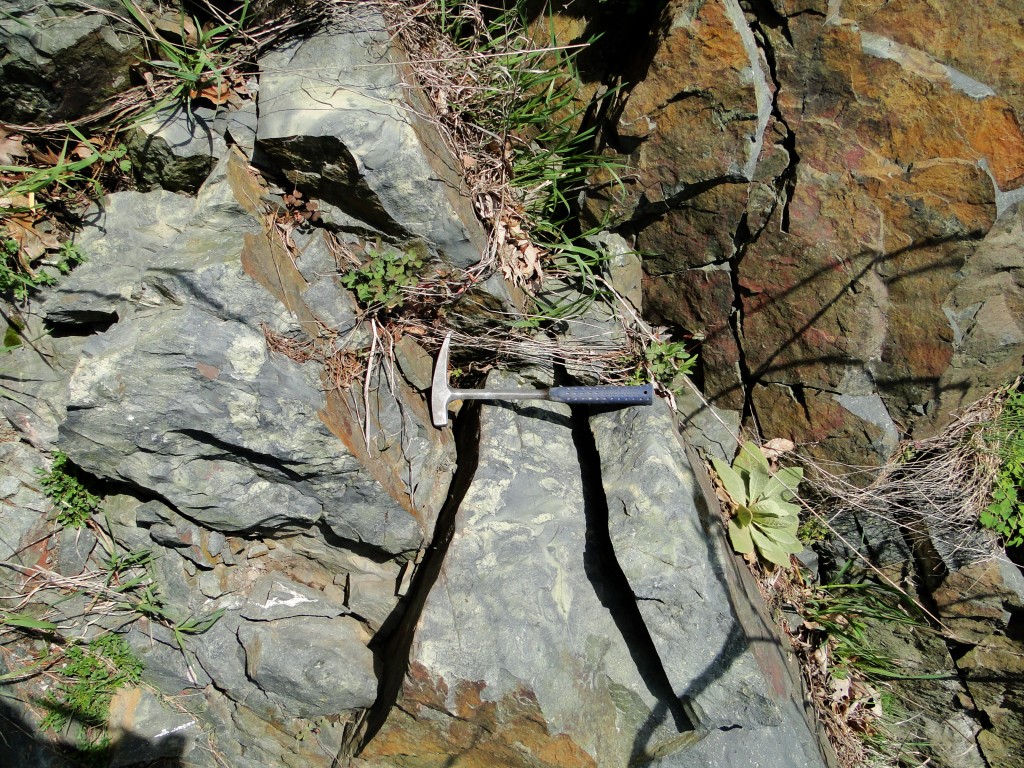
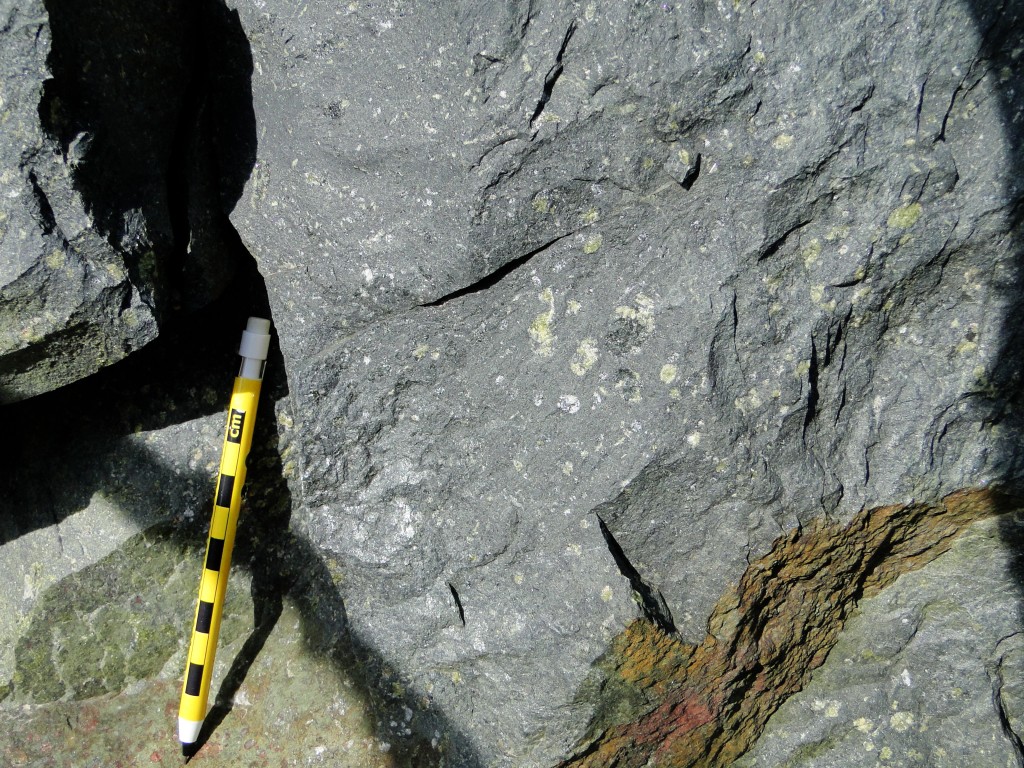
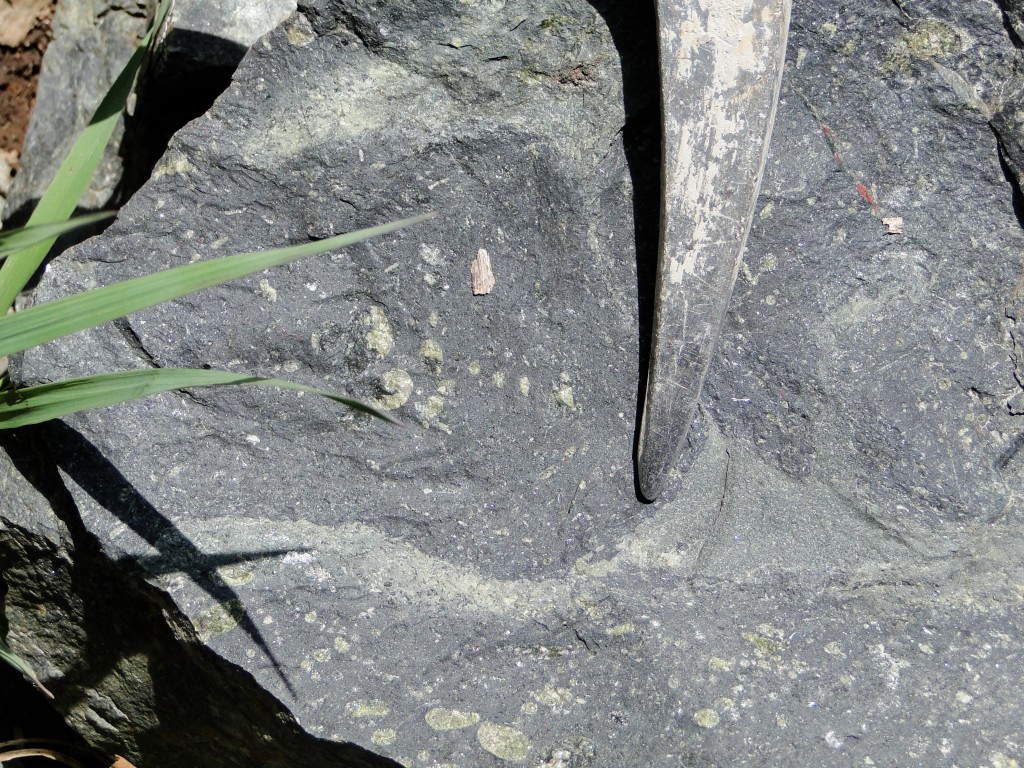
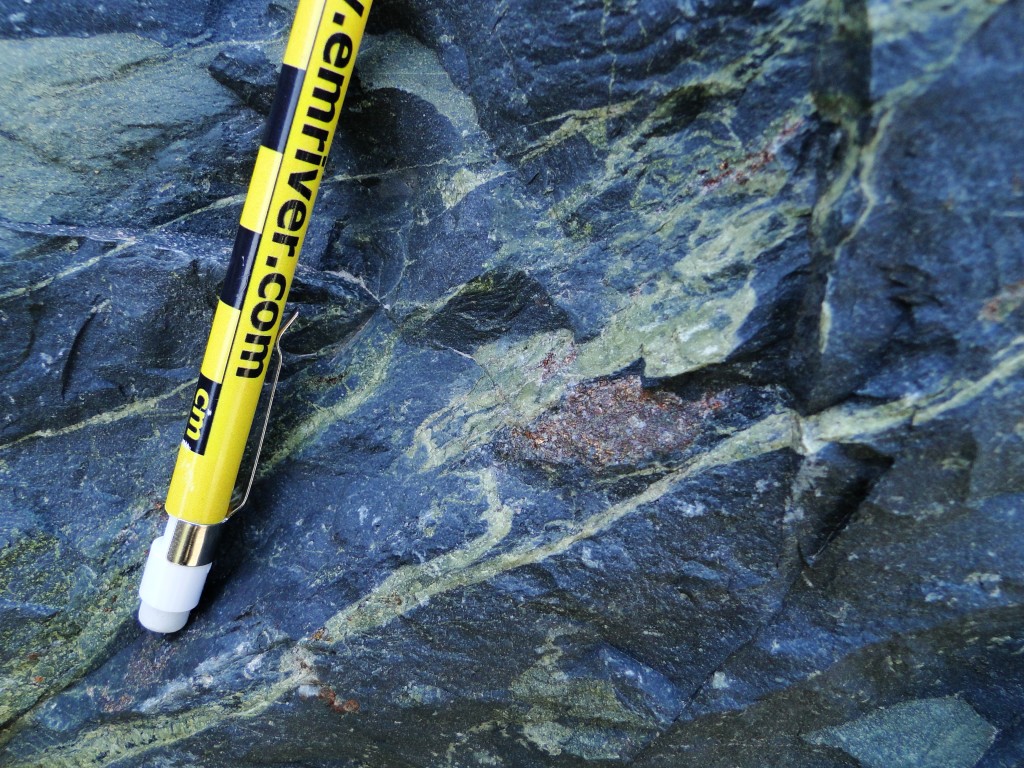
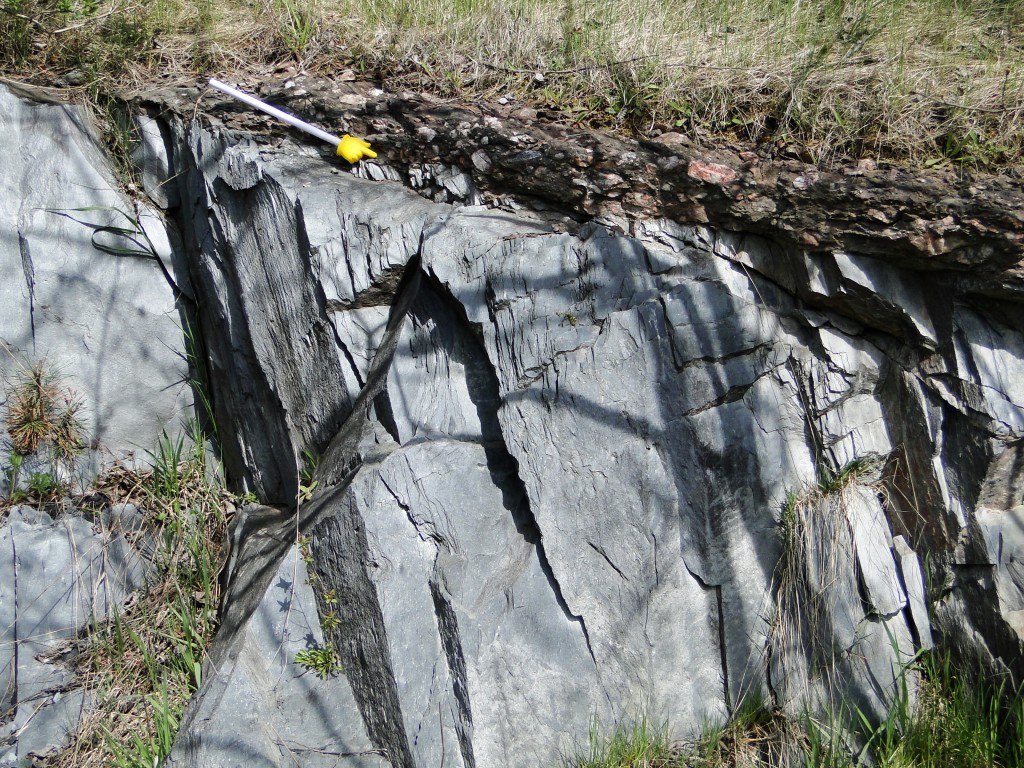
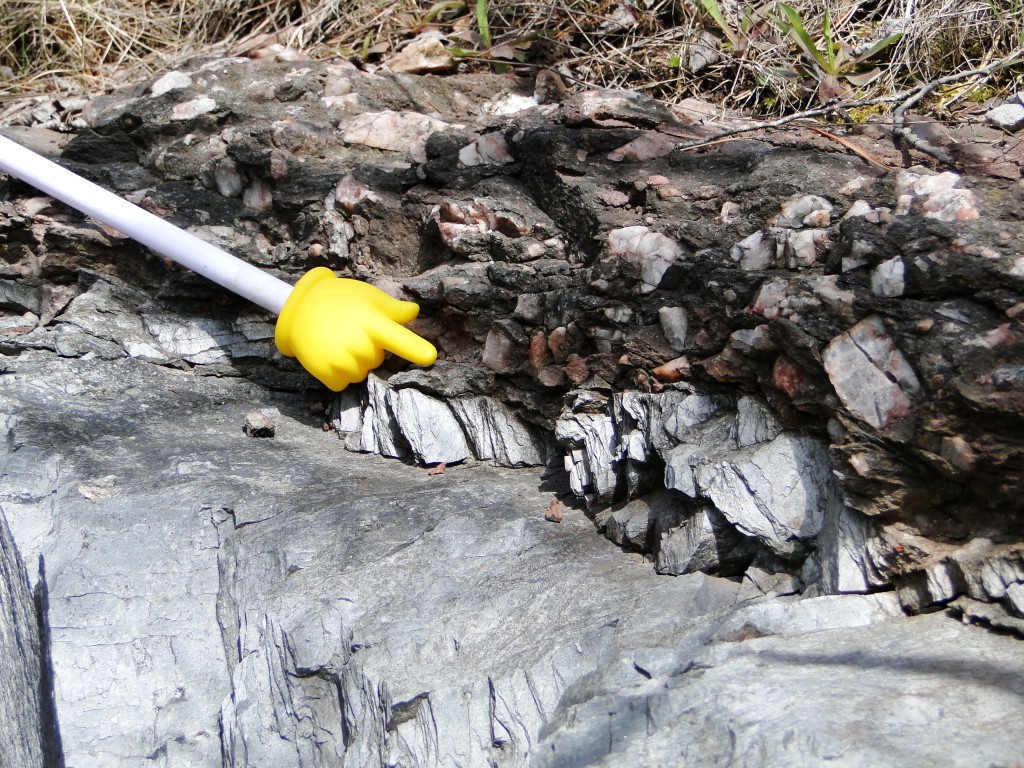
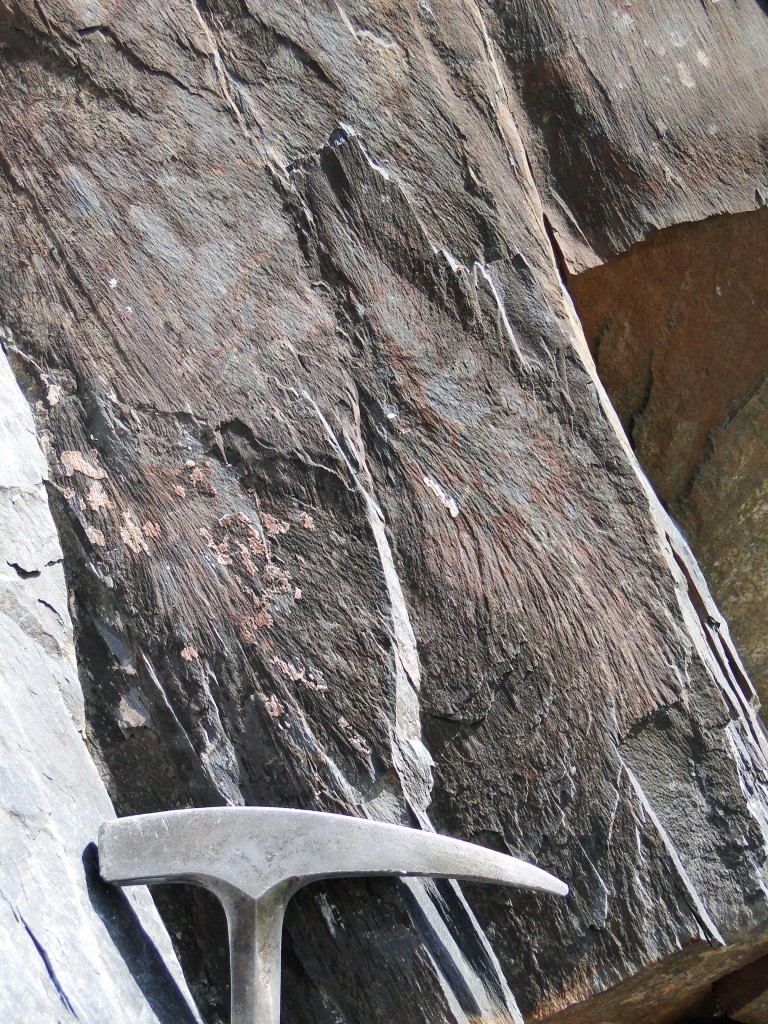
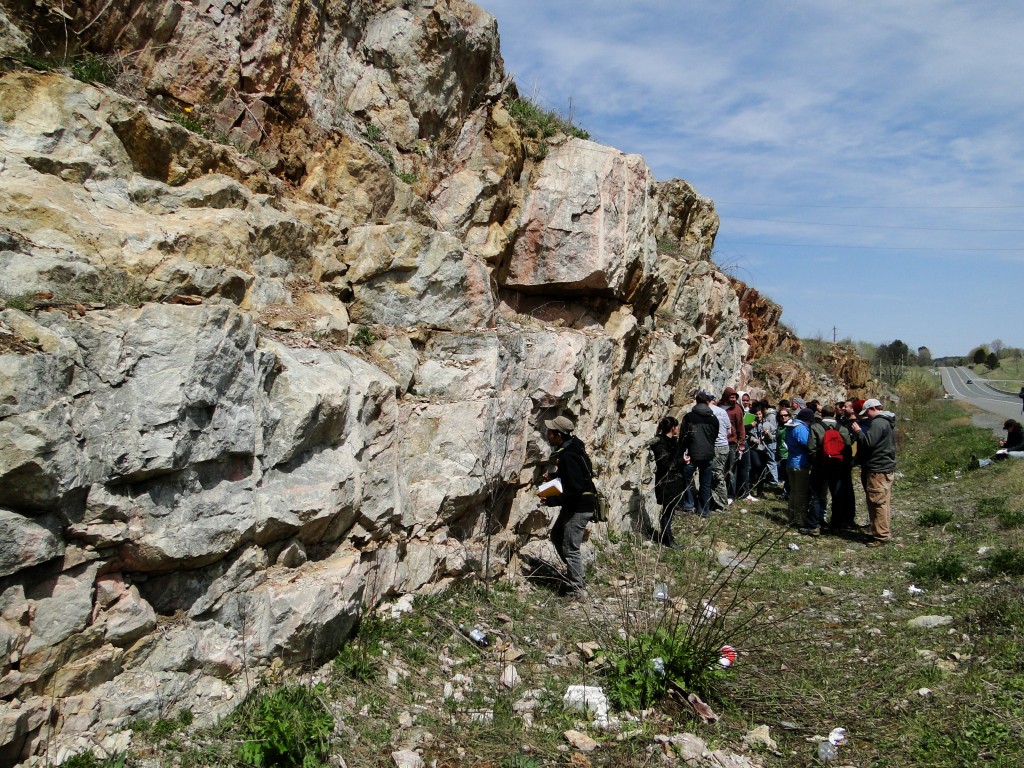
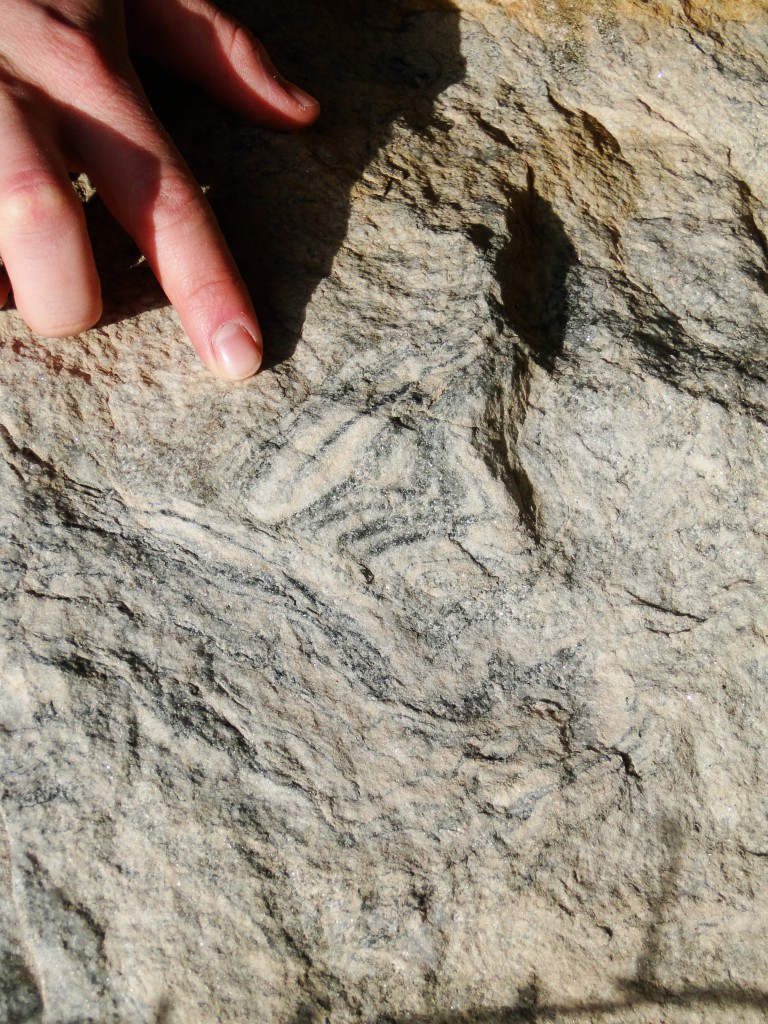
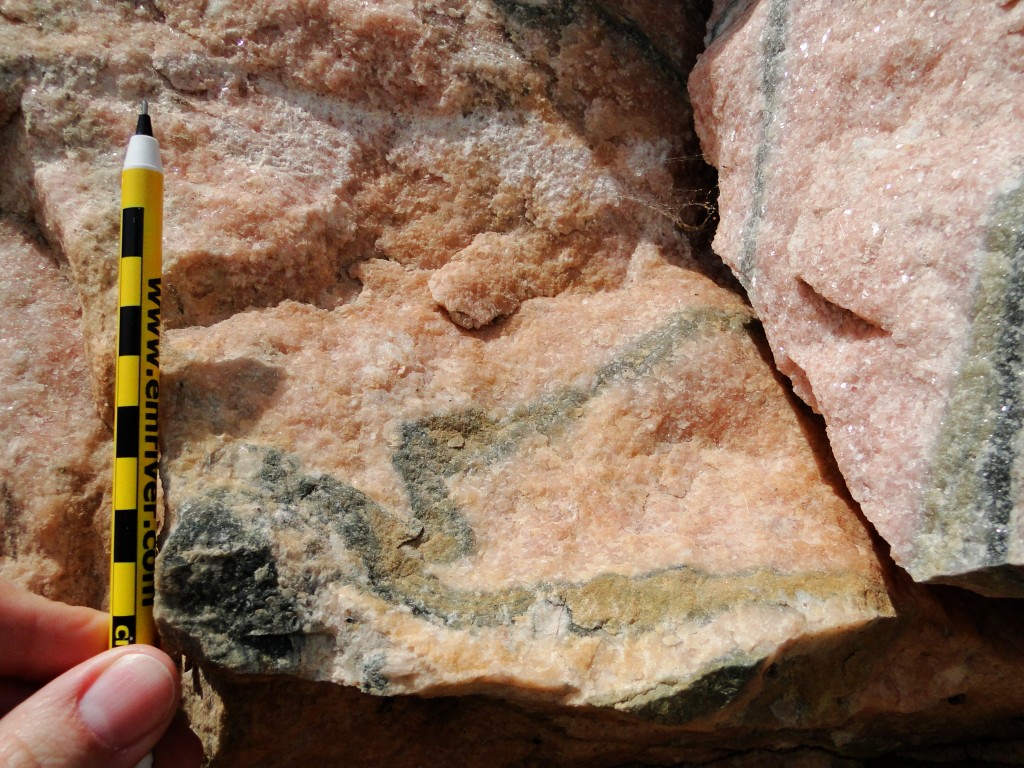
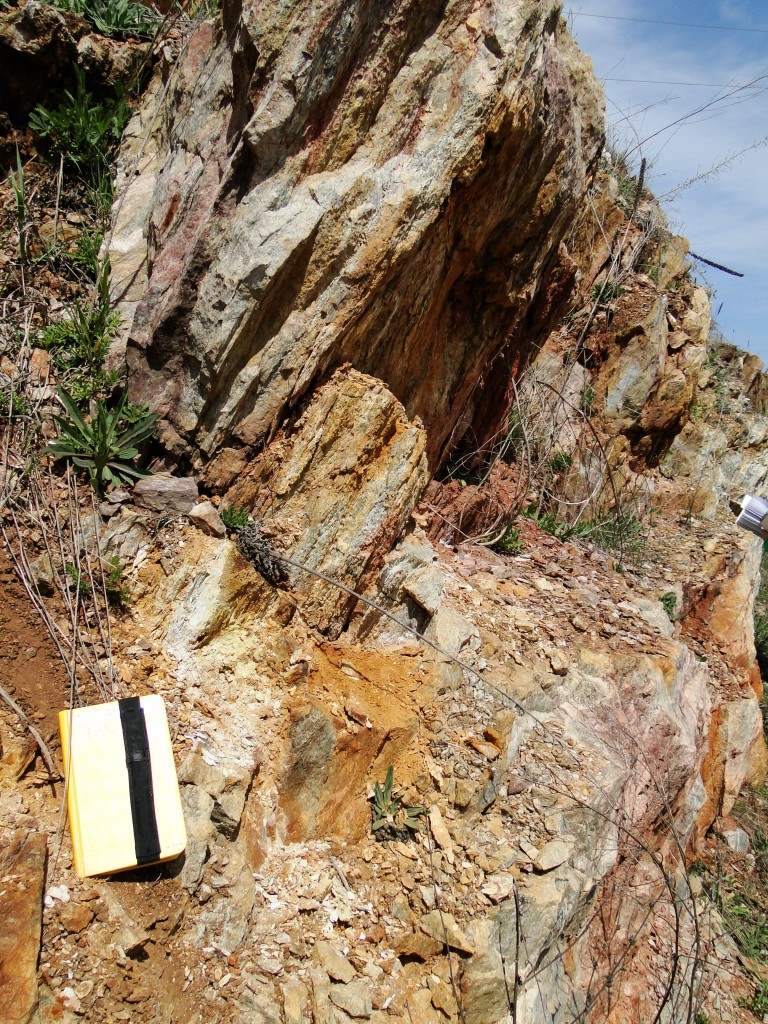
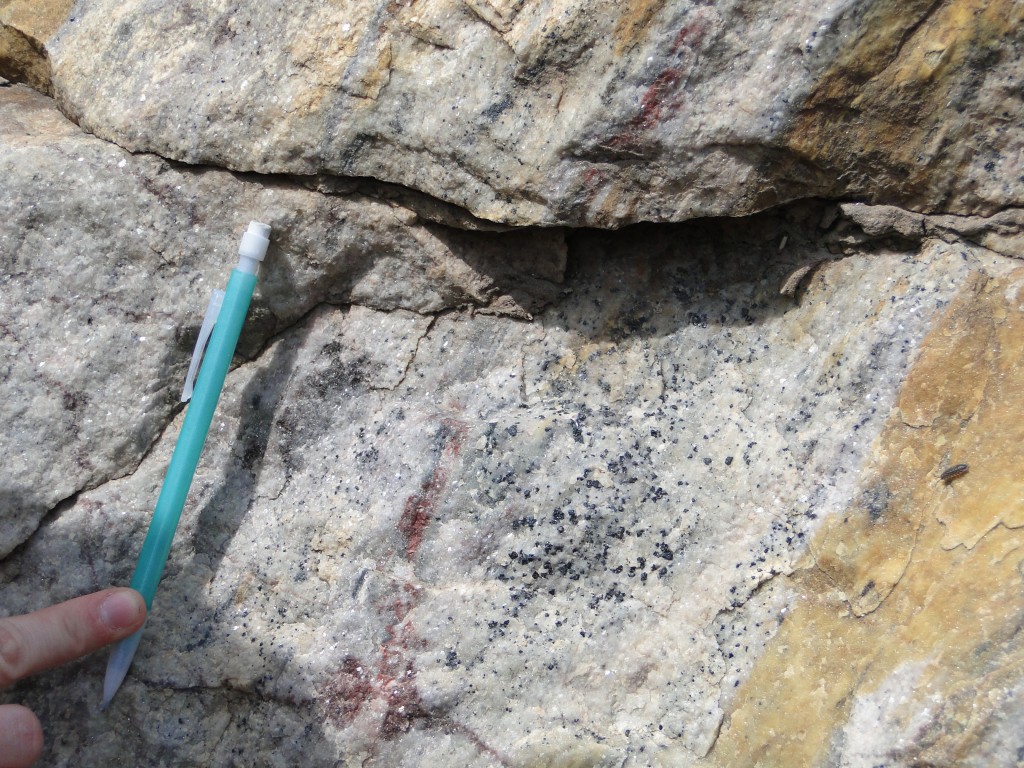
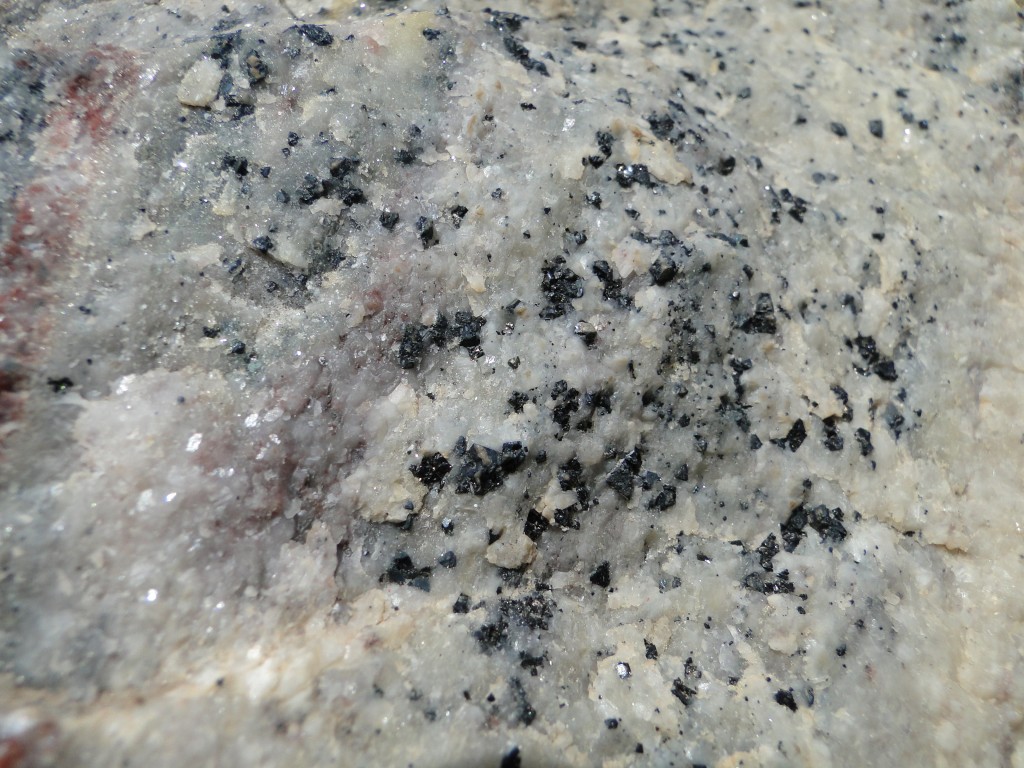
 Jessica Ball is a volcanologist at the U.S. Geological Survey, researching volcanic hydrothermal systems and stability, and doing science communication for the California Volcano Observatory. She previously worked at the Geological Society of America's Washington DC Policy Office, learning about the intersection of Earth science and legislative affairs. Her Mendenhall postdoc and PhD focused on how water affects the stability of volcanoes, and involved both field investigations and numerical modeling applications. Her blogging covers a range of topics, from her experiences in academic geosciences to science outreach and communication to her field and lab work in volcanology.
Jessica Ball is a volcanologist at the U.S. Geological Survey, researching volcanic hydrothermal systems and stability, and doing science communication for the California Volcano Observatory. She previously worked at the Geological Society of America's Washington DC Policy Office, learning about the intersection of Earth science and legislative affairs. Her Mendenhall postdoc and PhD focused on how water affects the stability of volcanoes, and involved both field investigations and numerical modeling applications. Her blogging covers a range of topics, from her experiences in academic geosciences to science outreach and communication to her field and lab work in volcanology.
I think they ar beautiful
Bancroft Mountain Colorado ? I am in Maryland and want to find more good places to do some rock hunting.
That would be Bancroft mining district in Canada, north of Lake Ontario. If you’re in Maryland, you might try checking out the https://www.reddit.com/r/rockhounds/ forum for specific sites – word-of-mouth often gives you a better idea of what’s out there than books or web searches! In general, if you’re looking for something other than fossils in Maryland, you’ll want to head for the mountains, specifically in places where there are granite pegmatites. These often host interesting minerals and large, collection-worthy crystals.